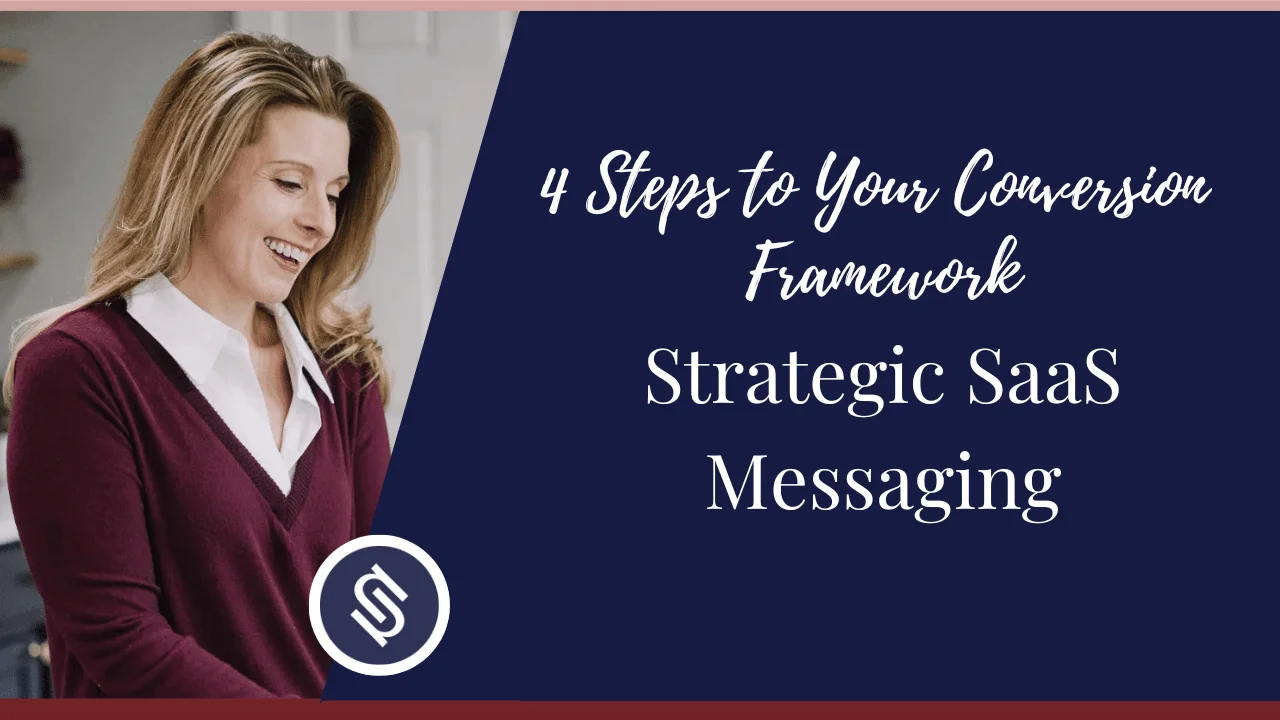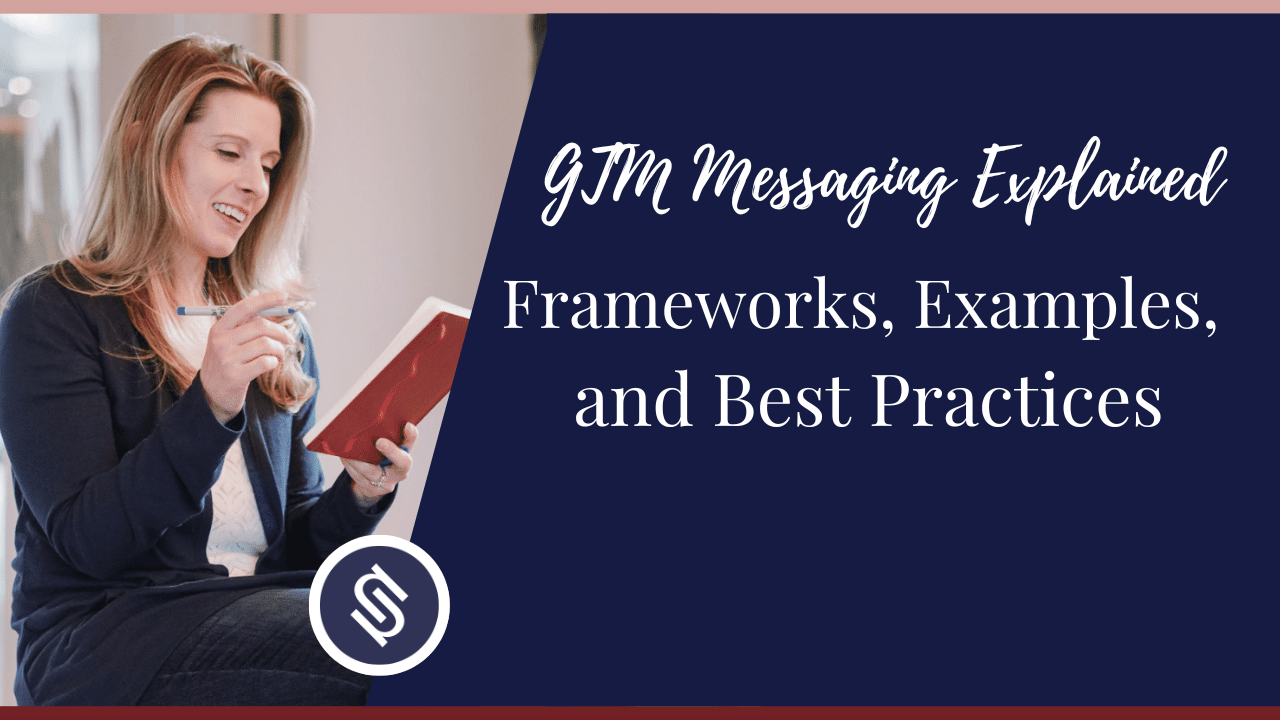Tuh-may-toe. Tuh-mah-toe. Two ways to say the same thing.
In marketing speak, positioning and messaging are often used interchangeably.
However, they’re two different things that function distinctly from each other and serve various purposes.
Below, we will discuss the fundamental differences between positioning and messaging, as well as their roles in creating a unified brand.
We’ll also show how they work together to strengthen a brand.
TL;DR – Messaging vs. Positioning
Skim through this overview to get started:
| Positioning | Messaging |
|---|---|
| A messaging exercise that clarifies a brand’s place in the market relative to the competition and answers the question, “Why it?”. | The way a brand expresses its positioning to the target audience. |
| A high-level, internal strategy that allows a team to understand the brand’s unique value proposition. | Has an external focus (the target audience) and guides how to create content and interact with the market. |
| Created to enable internal teams to communicate the brand to the audience accurately. | Ensures that key messages, content pieces, and interactions with the market are consistent with the brand position. |
| One overarching and concise statement that defines the brand and how it benefits the target audience. | Comes in the form of various statements that detail the benefits of the brand to specific audience segments. |
| Lays the foundation for effective messaging. | Results from clear positioning and allows for content that resonates with the target audience. |
Need expert eyes on your marketing strategy?
Together, we can define your positioning and sharpen your messaging to resonate with your audience. We build your messaging frameworks using proven marketing strategies that ensure your brand stands out in the crowd.
Book a discovery call with me, and let’s design your next successful marketing campaign!

What is Positioning?
Positioning defines how a brand fits in the market and clarifies what sets it apart from the competitors. It’s a strategy designed to align internal teams on what a brand stands for and what it offers.
Any successful messaging strategy must begin by laying the proper groundwork. In branding, that’s the positioning statement. It helps to understand a brand by articulating it accurately to the audience.
Unlike messaging that adapts to trends and changes in the marketplace, positioning remains consistent and acts as a compass, ensuring the messaging stays true to what a brand represents.
What is a Positioning Statement Framework?
A positioning statement framework is a brief that defines key attributes of a brand.
The framework should include the following details:
- Market Position: How is a brand perceived in the marketplace? If the market position doesn’t align with what it should be, detail the steps to take to bring the brand where it needs to be.
- Buyer Personas: These are representations of the target market. They help capture the audience’s attention more effectively and identify the needs, preferences, and interests that the brand addresses.
- Unique Value Proposition (UVP): The UVP outlines what differentiates a brand in the marketplace. It can be driven by cost (are the offerings the most affordable?), uniqueness in either product or service, quality, a new approach to solving a problem, or emotional appeal.
- Competition: Know what a brand is up against. Include data about the competitors, like what market segments they’re succeeding with or opportunities they haven’t tapped into.

What is Messaging?
Now that the foundation is in place, it’s time to start developing the messaging.
Messaging expresses the positioning and results from clearly defining the benefits of a brand, products, or services. It entails a nuanced communication of those benefits to specific segments of the target audience.
Also, while positioning focuses on the team, messaging focuses on the audience. The target is external instead of internal.
What is a Product Messaging Framework?
A product messaging framework (or messaging hierarchy) is a structure that outlines how to effectively communicate the brand’s benefits to the target buyer personas.
There is no one way to create a messaging framework, but it should include these key elements:
- Brand Pillars: Establish a cohesive and recognizable identity for the brand that resonates with the audience.
- Target Audience: How to shape the messaging depends on who it’s for. Defining the audience also helps create nuanced messaging targeting various audience segments.
- Objective: Explain what a brand intends to achieve with the messaging.
- Headline Benefits: Present the key benefits of the brand or product in a concise and memorable way.
- Proof Points: Provide evidence of how to deliver the headline benefits. These also bolster your brand’s credibility.
If you need help creating compelling and creative messaging for your product or brand, book a discovery call with me today!

Why Messaging vs. Positioning Matters for Brands?
When the brand positioning fits together with the messaging, it creates a consistent story that an audience can remember.
Let’s find out other reasons why both of these elements matter:
1. Creates Uniqueness
When a brand highlights the special qualities in the positioning and messaging, it showcases a unique brand identity. This makes it easy for the target audience to notice and remember the brand.
2. Promotes Consistency
When a brand’s positioning and messaging are the same everywhere, the audience can trust it as reliable and trustworthy.
3. Enables Decision Making
If the brand’s positioning and messaging are precise, people can understand what it’s about. It makes it simple why they should choose the offering over the others in the market.
4. Promotes Longevity
When a brand is strongly aligned with its positioning and messaging, it can better navigate the market changes and evolving trends. A consistent identity becomes a foundation for adapting to changes without losing its essence.
5. Allows a Strong Connection with Customers
When a brand’s positioning and messaging align with what customers care about, it fosters a strong emotional connection. The audience feels like the brand understands them and shares their values. Ultimately, it increases their loyalty to a brand.

Relevant Characteristics Between Positioning and Messaging
Let’s clarify positioning and messaging by examining the key characteristics that define the two.
| Positioning | Messaging | |
|---|---|---|
| Focus | Internal (the teams) | External (the target audience) |
| Objective | Aims to provide teams with a clear understanding of a brand, its benefits, and its position in the marketplace | Aims to express the value of a brand to the target audience by translating the positioning into statements that resonate with each buyer's persona |
| Dependency | Depends on the strengths of a brand and the actual value of the offerings | Depends on the clarity of the positioning and the needs, interests, and preferences of each audience segment |
| Content Variation | Positioning statements or frameworks are concise and stay consistent over a period of time | Messaging statements can vary per audience segment and evolve over time |
| Application | Guides and informs the messaging | Used to inspire action and motivate engagement |
| Impact | Results in effective messaging | Results in higher engagement and conversions |
Similarities and Differences
Positioning and messaging often overlap as a brand constructs the messaging architecture, so how do they differ?
Positioning and Messaging Differences
These are ways in which positioning and messaging differ from each other:
- Timing: Positioning is determined before any messaging can take shape, while messaging is created after precise positioning.
- Focus: Positioning is an internal exercise, while messaging has an external focus.
- Function: Positioning aligns internal teams on the brand’s story, while messaging speaks to the target audience about the value of your brand and influences their behavior.
- Content: Positioning is the context behind the story, while messaging is the content the audience consumes.
- Objective: Positioning aims to understand how best to communicate the brand’s value, while messaging is about conveying to the target audience the benefits they gain by choosing a brand.
- Consistency: Positioning remains the same over time, while messaging evolves in response to industry shifts or changes in the target audience.
Messaging and Positioning Similarities
Here are the ways these two concepts overlap:
- What they tell: Positioning and messaging both communicate the brand’s value.
- Marketing outcome: Both are necessary for the marketing strategy to resonate with the audience and drive results.
- Shaping brand identity: Both play a role in forming a solid and memorable brand identity.

How to Align Messaging with Positioning
To achieve an effective messaging and positioning that aligns, these are the key steps to follow:
1. Define the Brand Cores
Start by identifying the brand’s mission, vision, values, and story. Understand what a brand stands for, how it should be perceived, and the position it stands in the market.
Define the core elements to serve as reference points to align both the messaging and positioning.
2. Research the Audience
Understand the customers by researching their preferences, their needs, pain points, and motivations.
With this knowledge, a brand can define its positioning and messaging to resonate more effectively with customers’ needs and desires.
3. Analyze the Competition
Once the brand cores and audience are defined, the next step should be to analyze the competition.
Conduct market research and gather customer feedback about the competitors to gauge their brand positioning. Understand the messaging they use and their current market position. Use the strengths and weaknesses to assess where the positioning and messaging should excel.
4. Create Messaging Pillars
Create a unique brand position by identifying what makes the brand different. The positioning becomes the foundation that spells out the benefits of the product or service.
Then, define key messages that describe the exact pain points. Besides, paint the picture with the messaging of the solution the offerings provide, and back up the claims with proof.
5. Consider Consistency Across Channels
Remember to match the tone and style of the positioning and messaging. Whether a brand’s tone is reassuring, bold, or innovative, its messaging should consistently reflect that, allowing the audience to recall and connect with the business.
6. Test the Messaging
Check if the team members can explain the positioning the same way and if the messaging highlights that. Also, conduct messaging testing on emails, ads, and sales conversations to see if customers can easily identify the key differentiators.

Common Mistakes with Messaging and Positioning
Often, brands make mistakes that can hurt their efforts to build a strong brand. Below, we’ll explore the common mistakes businesses make in positioning and messaging:
- Lack of Clear Differentiation: A major mistake is failing to clearly highlight the unique elements that distinguish a brand and its offerings.
- Targeting the Wrong Audience: Many brands don’t understand their ideal customers, their values, and their preferences. They make the mistake of trying to create messaging that appeals to everyone.
- Inconsistent Brand Messaging: When there is inconsistency in the messaging across different touchpoints, it can confuse customers and dilute the brand’s credibility.
- Neglecting Emotional Connections: Both brand positioning and messaging are not solely about logic. They are also about creating an emotional connection with an audience.
- Ignoring Evolving Consumer Preferences: Brands that fail to adapt their positioning and messaging to the changing consumer preferences and market trends can be overshadowed by competitors who align better with the lates

What is a Value Proposition?
A value proposition is another marketing term often lumped together with positioning and messaging. But don’t confuse it with meaning the same thing as either of the two.
The value proposition is a statement of what the brand promises the market.
It’s the “what” of the brand:
- What does it offer?
- What benefits does the brand deliver?
- What are its advantages over its competitors?
Essentially, the value proposition is the reason behind the positioning and the meat in the message.
Every marketing strategy begins with a clearly defined value proposition.

Bottom Line
Let’s recap this guide with these key takeaways:
Step one is understanding the brand positioning that sets a strategic foundation, and step two is creating compelling messages that resonate with an audience.
Positioning and messaging perform different functions. Positioning allows a brand to align the teams on what it offers and what sets it apart in the market.
On the other hand, messaging is how a brand articulates its positioning or its value to the target audience. All these — the value proposition, positioning, and messaging — are necessary to build a strong and memorable brand.
Need help? Partner with me and let’s uncover what truly differentiates your brand, defining your brand positioning so it speaks directly to your clients. We will also craft messaging that feels authentic and compelling.
Collaborate with a brand messaging strategist to develop a comprehensive brand messaging strategy that attracts, converts, and fosters long-term growth.

Frequently Asked Questions (FAQs)
I’ve answered some of the most commonly asked questions about positioning and messaging below:
What Are the Key Components of Effective Messaging?
For your messaging to work, you need these three elements:
- Value proposition: Describe what you offer your potential customers, including the pain points your brand or product addresses and the solutions you provide.
- Understanding of your target audience: Shaping buyer personas through market and customer research will help you speak your audience’s language and resonate with them.
- Proof points: Social proof in the form of testimonials, case studies, and expert recommendations boosts your credibility and fosters trust.
Can You Change Your Brand’s Positioning Without Altering Its Messaging?
You can’t change your positioning without also reshaping your messaging.
Your messaging is the expression of your market position, which means that when your positioning changes, the messaging required to convey your brand story also evolves.
How Does Audience Perception Affect Positioning and Messaging?
Audience perception significantly impacts your market position, affecting how you communicate your brand value to your audience.
Let’s look at Zoom and Google Meet, for example. Zoom is primarily perceived as the video conferencing option for businesses, while Google Meet is seen as the more casual option for families and friends to connect.
That audience perception dictates their positioning (and if it doesn’t align with their desired position, they need to take steps to shift audience perception).
As a result, their positioning influences how they communicate their value, benefits, and features.
No wonder Zoom’s messaging focuses on business-related objectives, like enhancing productivity. Google Meet, on the other hand, is an easy way to communicate through video conferencing.
What Role Does Competitive Analysis Play in Positioning Your Brand?
Assessing your competition is crucial to determine what gaps in the marketplace you fill (or can fill, if you’re building a startup).
Also, analyzing your competitors will help you check how you fare against similar brands, compare what you do differently, and where others have succeeded (and how).
All of these insights will enable you to shape unique and memorable positioning–so you don’t just copy what other brands are doing!
How Can Small Businesses Leverage Positioning and Messaging for Growth?
Larger companies with deeper pockets can afford bigger marketing budgets, making them tough to beat. However, small companies can carve a share in the marketplace by leveraging a strong market positioning.
Positioning allows you to differentiate yourself from your competition, effectively leveling the playing field.
But doing that takes expertise. You need a pro who knows the ins and outs of all levels of marketing strategy. Work with a million-dollar marketing coach – schedule a discovery call with me today.
How Do Positioning and Messaging Work Together in a Marketing Campaign?
Positioning and messaging go hand-in-hand in marketing.
Positioning defines how your brand fits in the marketplace and elaborates on your brand value.
Conversely, messaging communicates your positioning to your target audience to influence their buying behavior in your favor.
How Do You Test If Your Messaging Supports Your Positioning?
Test if the messaging supports the messaging by:
- Checking if the customers can understand a brand after reading the content.
- Reviewing all the brand’s content across various platforms, including the website, emails, and social media posts, effectively expresses the core values and key differentiators.
- Analyzing the messaging alongside the competitors to see if it’s distinct and memorable
- Running A/B tests on the ads, landing pages, and email subject lines to see if they align with the positioning to increase engagement and sales





